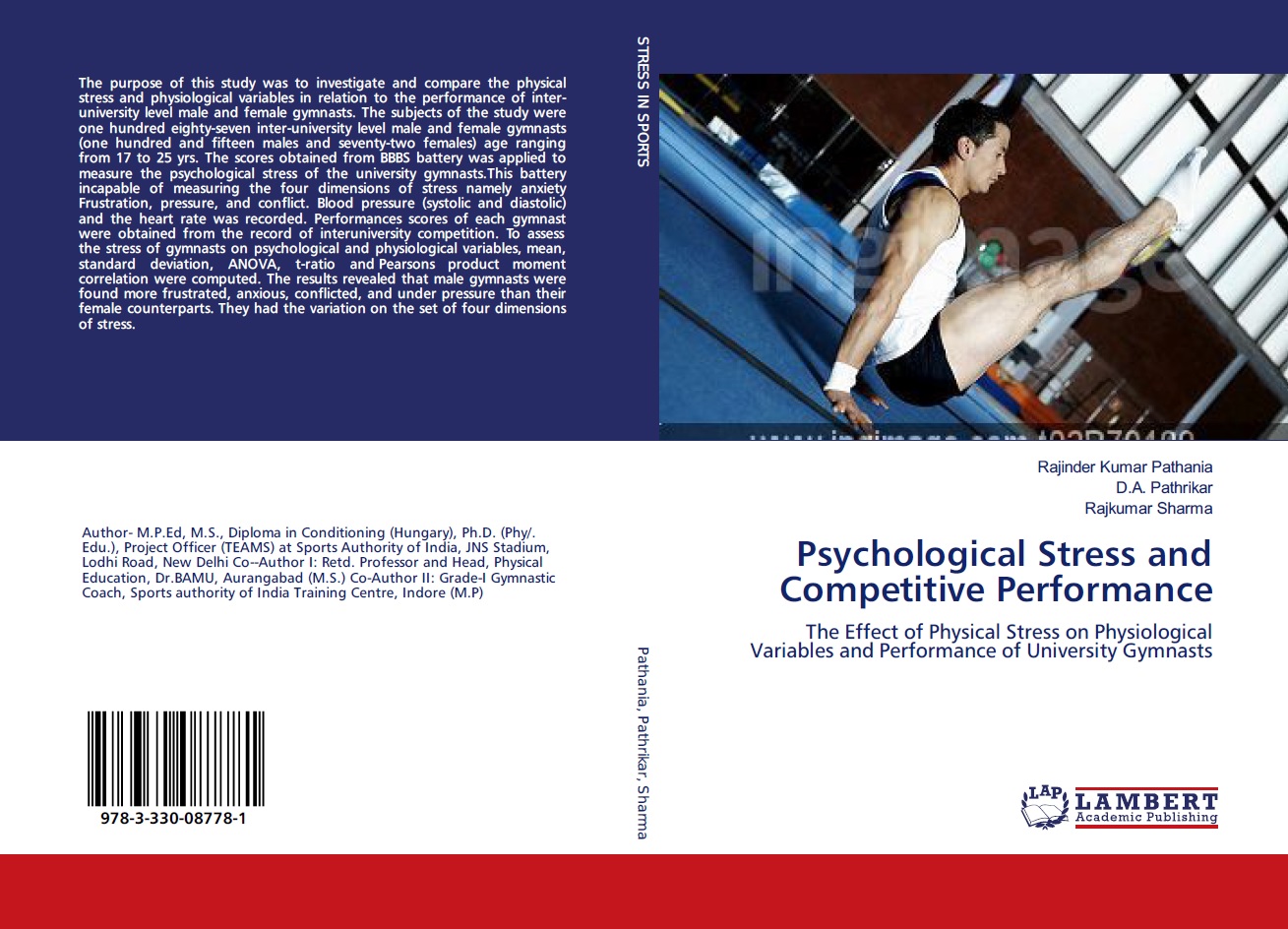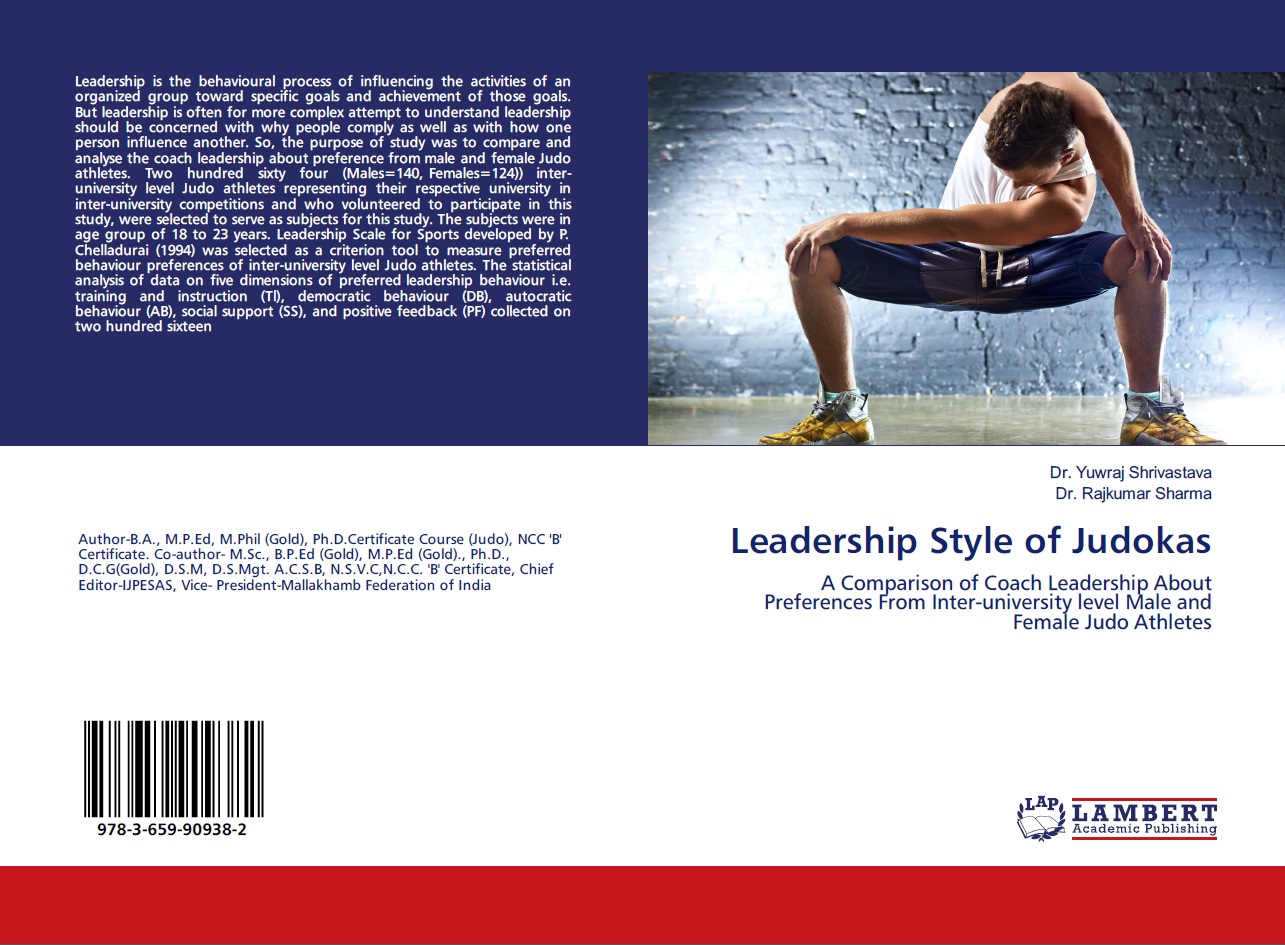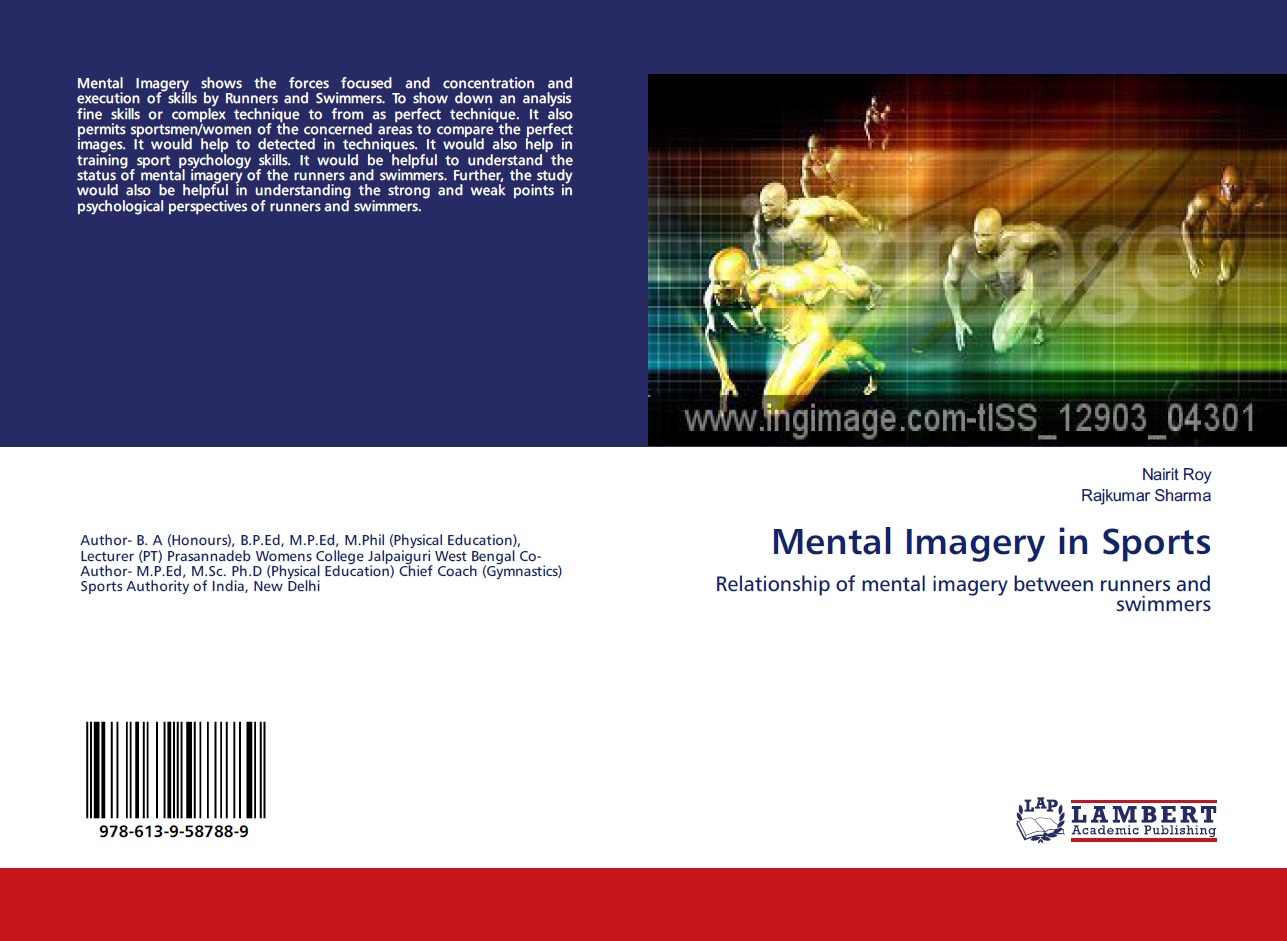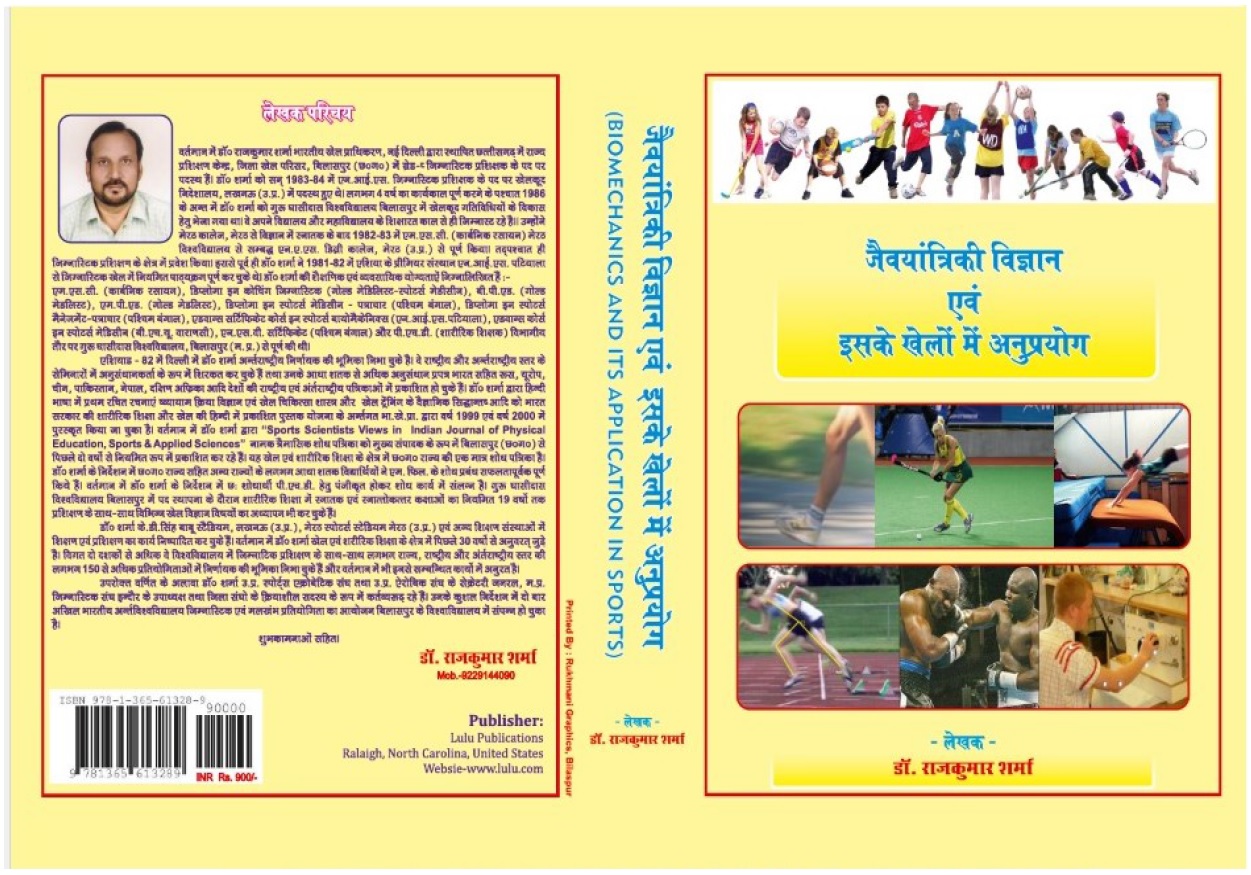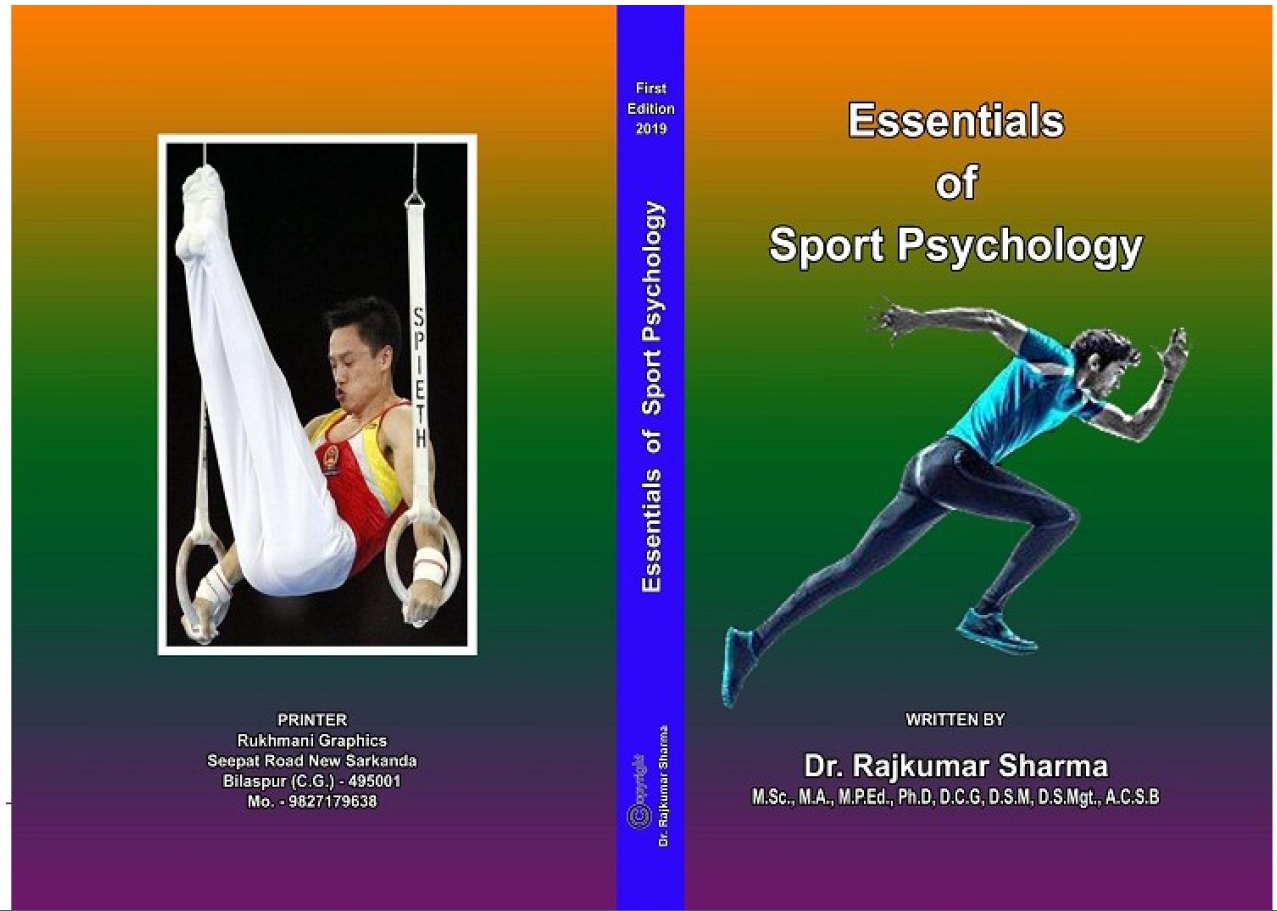| S.No. | Total View Count | Title of Manuscript | Page No | Download/ PDF |
|---|---|---|---|---|
| 1 | FROM PHYSICAL EDUCATION TO SPORTS SCIENCE AS A CAREER PATHWAY: ASSESSING OUR READINESS Author: Daniel Muindi | 11-30 |  5 5 |
Article info
doi no.: 05-2016-44975451; DOI Link :: https://doi-ds.org/doilink/08.2023-75837917/IJPESAS/V12/N4/OCT/2022/A3
AFFILIATIONS:
1 Senior Lecturer, Department of Educational Communication and Technology, Kenyatta University, Nairobi Kenya Tel +254 738404505 P.O BOX 43844-00100
Since education is a vehicle for economic and social change, it is imperative that a country’s education curriculum is constantly reviewed to keep it abreast with the globalization of labour market and demand for acquisition of the twenty first century skills. Many countries globally, have shifted from content based curricula to competency based teaching learning approaches. The implementation of competency based teaching-learning approaches can be traced to teacher education in the United States of America in the 1970s. Since then, competency based learning approaches have been developed and implemented in a range of professional areas and learning institutions in various countries. UNESCO (2015) views Competence Based Curriculum (CBC) as a vehicle through which a country can empower its citizens with skills, knowledge and values that will help them fit in the global village which is characterized by advancing technology. Further, IBE-UNESCO (2017) highlighted that CBC enables learners to perform practically and measurably, using the skills acquired through learner centered pedagogy. Curriculum is the means through which a nation endows its people with essential skills, knowledge, values and attitudes that enable them to be fortified for individual and national progression. Curriculum, thus, must fulfill the desires of the intended citizens and the country as envisaged. The Kenya Institute of Curriculum Development (KICD) embraced a Competency Based Curriculum (CBC) in the quest for reforms informed by the findings of needs assessment report sanctioned in the year 2016. The three decades’implementation of the 8-4-4 education structure has faced many challenges leading to failure to realize its noble philosophy of "education for self-reliance". As the third major reform in Kenya’s education, the implementation of the CBC in Kenya, is an effort to adopt an international fit reform and is a viable decision to ensure its citizens’ move to the attainment of global competence. Unlike the 8-4-4 system that was touted as theoretical and exam oriented, the CBC is concerned more with competencies and learners skills. In fact it identifies and sets out Arts and Sports Science as one of the three career pathways at the Senior Secondary School level. The school is positioned to identify and nurture talents as the first academy of the stars, since it can discovers the talents of the athletes at an early age. Through the healthy and sound school atmosphere, every young person can practice his/her physical hobbies. Therefore, The sports activities at school can then become a fundamental component in the formation of an integrated personality of the individual. In addition, they can modify the faulty behaviors of the students to reach the highest levels, as it is the basic structure for the sports movement. However, judging from how Physical Education has been taught and implemented under the 8-4-4 curriculum where it is compulsory albeit non-examinable, critics are skeptical about the success of the Sports Science as a career pathway at Senior Secondary School Level. As a complex system of education, the CBC has flourished in the vocational and training levels as opposed to basic education. However, it is believed that it can also flourish and the basic education level and serve the needs of the learners as well as the needs of the country to become a middle level economy by 2030.
Key word: Physical Education, Curriculum, Colonization , African, Acivities
References
Acosta, I. C., & Acosta, A. S. (2017). A Mixed Methods Study on Teachers' Perceptions of Readiness of Higher Education Institutions to the Implementation of the K-12 Curriculum. Universal Journal of Educational Research, 5, 1215-1232
Acquah, P. C., Frimpong, E. B., & Borkloe, J. K. (2017). The Competency Based Training (CBT) concept of teaching and learning in the Technical Universities in Ghana: Challenges and the Way Forward. Asia Pacific Journal of Contemporary Education and Communication Technology, 3(2), 172-182.
African Union (2008). Second Session of the African Union Conference of Ministers of Sport 10 – 14 October 2008 Accra, Ghana.
Amusa, L.0. & Toriola, A.L. (2012). Professionalization of physical education and sport science in Africa. African Journal for Physical, Health Education, Recreation & Dance, 18(2), 628-642.
Aquilina, D. & Henry, I. (2010). Elite athletes and university education in Europe: A review of policy in higher education in the European Union Member States, (4thed.).Prentice-Hall International.
Aquilina, D. (2013): A study of the relationship between Elite Athletes’ Educational Development and Sporting performance The International Journal of the History of Sport.30(4), 374-392. https://doi.org/10.1080/09523367.2013.765723
Arguellos A. and Gonczi A. (2000). Competency-based education and training: A world perspective. Mexico. Noriega Editores.
Bailey, R. (2005). Evaluating the relationship between physical education, sport and social inclusion. Educational review, 57, 71-90. [Google Scholar]
Capranica, L., & Guidotti, F. (2016). Structural and cohesion policies; Qualifications? Dual career in sport: Research for cult committee. European Union. http://www.europarl.europa.eu/supporting-analysis
Carla E and Vander E.J. (2018). Competency-based education. Education reform. A primer. Research gate.
Coates, D., & Humphreys, B. R. (2003). The effect of professional sports on earnings and employment in the services and retail sectors in US cities. Regional Science and Urban Economics, 33, 175 - 198.
Cola, G. D. (2006). Beyond the scoreboard: youth employment opportunities and skills development in the sports sector. International labour office. [Google Scholar]
Currie, J. (2016). Using sporting themes to engage young males in health education lessons. Education and Health, 34, 25-30.
Esau, H., & Mpofu, J. (2017). The Preparedness of Primary Schools to Implement the Grade 3 New Curriculum in Zimbabwe: Case Study of Bulawayo Metropolitan Primary Schools. European Journal of Social Sciences Studies, 2, 104-116.
Fraile, L. (2017). The feasibility and possible benefits of indoor games in primary school.
Frost D, Worthen M, Gentz S (2015). Global Highlights: A Scan of High Performing Countries Using Elements of Competency-Based Education. New Learning Models, Practice, Research & Resources.
Gibbone, A., Rukavina, P., & Silverman, S. (2010). Technology integration in secondary physical education: Teachers' attitudes and practice. Journal of Educational Technology Development and Exchange, 3(1), 27-42.
Gitahi J (2019). What is competency based curriculum: The explainer. Wikitionary.com.
Gitonga, E. R., & Akpata, D. O. (1999). Academic performance of Kenyan secondary school athletes. African Journal for Physical; Health Education, Recreation and Dance, 5(1), 1-11.
Gitonga, E. R., Andanje, M., Wanderi, P. W., & Bailasha, N. (2012). Teacher- trainees’ attitudes towards PE in Kenya. Educational Research and Reviews, 10, 40-45
Gruber G (2018). 5 Benefits of Competency Based Education for Students. Explorance. Retrieved May 10, 2022 from: https://explorance.com.
Hardman, K. (2009). A Review of the Global Situation of Physical Education. International Journal of Physical Education, 46, 2-21.
Harrison, M. (2005). Public Problems, Private Solutions: School Choice and Its Consequences. Cato Journal, Cato Institute, 25, 197-215.
Holt, N. L.; Strean, W.B., & García, E. (2002). Expanding the Teaching Games for Understanding Model: New avenues for future research and practice. Journal of Teaching in PE, 21, 162-176.
Hoogkamer, W., Snyder, K. L., & Arellano, C. J. (2019). Reflecting on Eliud Kipchoge’s marathon world record: an update to our model of cooperative drafting and its potential for a sub-2-hour performance. Sports Medicine, 49, 167-170.
Houlihan, B., & Lindsey, I. (2008). Networks and partnerships in sports development. Management of sports development, 225-241.
IBE-UNESCO (2017). External Report on Curriculum pilot Implementation. Nairobi: UNESCO.
Jallow SS (2011).Competency –based Curriculum: Teaching and Assessing Student Competences. UNESCOBREDA Dakar, Senegal. Prepared for the Pan African Conference on Teacher Education and Development (PACTED), Lome, Togo, 13-15 April, 2011.
Kabita D, Ji L (2017). The Why, What and How of Competency-Based Curriculum Reforms: The Kenyan Experience. UNESCO: In-Progress Reflection No. 11 on Current and Critical Issues in Curriculum, Learning and Assessment
Kadoodooba, M. (2009). A comparative assessment of syllabi and implementation of physical education and sports programmes in primary and secondary schools in Kenya and Uganda. Master's Thesis. Kenya: Kenyatta University, 2009.
Kariuki, M. P. (2017). Attitude and Practice of Primary School Pupils, Teachers and Head Teachers in Physical Education in Kiambu County, Kenya (Doctoral Dissertation, Kenyatta University).
Kaves Z., (2017) Challenges in the Management of Sport in the Universities in Zimbabwe; Harare; PhD; Dissertation; University of Zimbabwe; Zimbabwe https://lis.204.ai.2w.8080/dspace/bitstream/o/3841
Kenya Institute of Curriculum Development (2016). Report on needs assessment on the primary level school curriculum in Kenya. Nairobi. Government printers.
Kenya Institute of Curriculum Development, (2017). Basic education curriculum framework.Nairobi. Government printers.
Kipchumba B., & Jepkorir R. C. (2015) Sports policy in Kenya: deconstruction of colonial and post-colonial conditions, International Journal of Sport Policy and Politics, 7, 301 - 313, DOI: 10.1080/19406940.2015.1023823
Kipng’etich Kirui, E. J., & Osman, A. (2016). An Assessment of the Qualification of Teachers of PE and Sports in Public Secondary Schools in Bomet County, Kenya. European Journal of Research and Reflection in Educational Sciences, 4, 8-17
Likoko, S., Mutsotso, S., & Nasongo, J. (2013). The adequacy of instructional materials and physical facilities and their effects on quality of teacher preparation in emerging private primary teacher training colleges in Bungoma County, Kenya. [Google Scholar]
Lim, W. M. (2019). Spectator sports and its role in the social marketing of national unity: Insights from a multiracial country. Journal of Leisure Research, 50, 260-284. [Google Scholar]
Mackatiani, C. I. (2017). Influence of Examinations Oriented Approaches on Quality Education in Primary Schools in Kenya. Journal of Education and Practice, 8(14), 51-58. [Google Scholar]
Mählmann, P. (1988). Sport as a Weapon of Colonialism in Kenya: A Review of the Literature. Trans African Journal of History, 17, 152-171.
Mahlmann, P., Asembo, J. M., & Korir, M. (1993). An analysis of sports in Kenyan educational institutions. Journal of Eastern African Research Development, 23, 160-175.
Mahmmoud, M. (2003). Needs of Physical Education Teacher of Service Training. Unpublished Master Thesis, Helwan University, Greater Cairo.
McNeal, K. S., Libarkin, J. C., Ledley, T. S., Bardar, E., Haddad, N., Ellins, K., & Dutta, S. (2014). The role of research in online curriculum development: The case of EarthLabs climate change and Earth system modules. Journal of Geoscience Education, 62(4), 560-577.
Meyer, K. L., & Roche, K. M. (2017). Sports-for-development gender equality impacts from basketball programme: Shifts in attitudes and stereotyping in Senegalese youth and coaches. Journal of Sport for Development, 5(9), 49-57.
Ministry of Education Science and Technology [MOEST], (2017). Basic education curriculum framework, Kenya Institute of Curriculum Development (KICD)
Ministry of General Education (MoGE) (2013).The Zambia Education Curriculum Framework.Lusaka: Curriculum Development Center.
Mkandawire, S. B. (2010). Impediments to curriculum implementation in learning institutions. African Higher Education Review, 8, 1-15.
Momanyi, J. M., & Rop, P. K. (2019). Teacher preparedness for the implementation of competency based curriculum in Kenya: A survey of early grade primary school teachers’ in Bomet East Sub-County. The Cradle of Knowledge: African Journal of Educational and Social Science Research, 7(1), 10-15.
Mugabo L, Ozawa H., & Nkundabakura P. (2021). Science Competence-based Curriculum Implementation in Rwanda: A Multiple Case Study of the Relationship between a School’s Profile of Implementation and its Capacity to Innovate. African Journal of Research in Mathematics, Science and Technology Education, 1-14.
Muinde, M. M. (2014). Investigation of implementation of PE Curriculum in secondary schools in Kitui County. Retrieved May 10, 2022 from: http://erepository.mku.ac.ke/handle/123456789/2837
Mulenga IM, Kabombwe YM (2019). A Competency-Based Curriculum for Zambian Primaryand Secondary Schools: Learning from Theory and some Countries around the World. International Journal of Education and Research 7(2):1-14.
Muthima, N. W., Udoto, M. O., & Anditi, Z. O. (2016). Primary School Teachers' Perceptions of Adequacy and Quality of Physical Facilities in Public Primary Schools under Free Primary Education. Journal of Education and Practice, 7, 146-148.
Mwisukha, A., & Gitonga, E. (2012). Parental role and influence in the teaching of physical education: Perceptions of physical education students in Kenyan universities. Paper presented at the Global Forum 2012 for Physical Education Pedagogy, Velen, Germany.
Mwisukha, A., Njororai, W. W. S., & Onywera, V. (2003). Contributions of sports towards national development in Kenya. East African Journal of PE, Sports Science, Leisure and Recreation Management, 1, 73-81. Google Scholar.
Mwisukha, A., Rintaugu, E., Kamenju, J., & Mwangi, P. (2012). Shaping the future of physical education in Kenya. Ming-Kai, C.-Edington, CR (eds): PE and Health Global Perspectives and Best Practice, Nairobi, Kenyatta, University, 270-278.
Njengere, D. (2017). The Why, What and How of Competency- based Curriculum Reforms: The Kenyan Experience. UNESCO International Bureau of Education.
Njororai, W S. (1994). Physical education and sport as part of education-for-all: The Kenyan case. Basic Education Forum, 5, 49-53.
Njororai, W. W. S. (2013). Contextualization of Kenya’s Post-independence Sporting Success. In KESSA Conference Proceedings (pp. 40-45).
Nyakweba, J.O. (2005). Status of Physical Education in Butere Division Secondary Schools, Kenya. Master's Thesis. Kenya: Kenyatta University, 2005.
Ogula, P. A. (2016). Monitoring and Evaluation of Educational Projects and Programmes. Nairobi: Mwenge Academic Publishers.
Ominde, S. H. (1964). Kenya education commission report (Vol. 1). Kenya Education Commission.
Omokhodion, J. (2008). Assessing the preparedness of Nigeria for her universal basic education program. Pakistan Journal of Social Science, 5, 866-870.
Ornstein, A. C & Hunkins F. P. (2009). Curriculum Foundations, Principles and Issues. New York: Pearson Education, Inc.
Orunaboka, T., & Nwachukwu, E. (2012). Management of Physical Education Facilities, Equipment, and Supplies in secondary Schools in Nigeria: Issues and Challenges. Journal of Education and Practice, 3, 43-47.
Otieno R, Onyango P (2019). CBC teachers laud new curriculum. Standard Digital. Retrieved May 10, 2022 from: https://www.standardmedia.co.ke
Oudat, M., Bader, F., & Khasawneh, A. (2009). Analytical Studies for Challenges Which Face Physical Education Teacher in Jordanian public Primary School. Scientific Journal of Physical Education and Sport, 37, 21-36.
Quay, J. (2014). The challenges of teaching PE: Juxtaposing the experiences of PE teachers in Kenya and Victoria (Australia). African Journal for physical health education, recreation and dance, 20, 745-754.
Republic of Kenya (2013). Sports Act No. 25 of 2013. Nairobi: National Council of Law Reporting.
Republic of Kenya (2017). Basic Education Curriculum Framework. Nairobi: Kenya Institute =of CurriculumDevelopment.
Republic of Kenya (RoK) (2012). Task force on realignment of education sector to the constitution 2010: Towards a globally competitive quality education for sustainable development. Nairobi: Government Printer.
Rintaugu, E. G., Mwisukha, A., & Munayi, S. (2011). Sports: On the right track. Youth Research Compendium, 309-330.
Rintaugu, E., Mwisukha, A., & Munayi, S. (2011). Sports: On the right track. In K. T. Njonjo, A. Kitonga, & A. Ponge (Eds.), Youth research compendium (pp. 309-329). Nairobi: Institute of Economic Affairs.
Rop, P. (2013). Challenges facing implementation of the integrated English curriculum in Kenya: a case of selected secondary schools in Kenya. Journal of Social Sciences Resources, Vol. 2, No. 3 pp. 21 -36, ISSN 2321-1091
Rubin, L. M. & Rosser, V. J. (2014): Comparing Division 1A Scholarship and Non-Scholarship Student Athletes; A Discriminant Analysis; Journal of issues in Intercollegiate Athletics;7(4), 43-64 http://csrijiia.org.
Rwanda Education Board (REB) (2015). Competence-based curriculum: Curriculum framework: Pre-primary to upper secondary 2015.Kigali: Rwanda Education Board.
Sanchez, K., & Romero, M. (2015). Teaching Pre-Service Teachers To Integrate Serious Games In The Primary Education Curriculum. International Journal of Serious Games, 2(1), 45 – 58
Sapkota, J. B., & Neupane, P. (2018). Sport for Development and Peace (SDP) Organizations and the Sustainable Development Goals (SDGs) of Nepal. Global Social Welfare, 1-12.
Sifuna, D. N & Obonyo, M. M. (2019). Competency Based Curriculum in Primary Schools in Kenya - Prospects and Challenges of Implementation. Journal of Popular Education in Africa. 3(7), 39 –50.
Sifuna, D.N., 1990. Development of education in Africa: the Kenyan experience. Nairobi: Initiatives.
Simiyu, C. N. (2019). The Challenges of Free Primary Education Implementation in Primary Schools in Bungoma County, Kenya. International Journal of Scientific Research and Management, 7(01).
Smith, A. (2015). Primary school physical education and sports coaches: Evidence from a study of school sport partnerships in north-west England. Sport, Education and Society, 20, 872-888.
Syomwene, A., Nyandusi C. M., & Yungungu, A.M. (2017). Core Principles in Curriculum. Eldoret: Utafiti Foundation.
Toriola, A.L., Amusa, L.O., Patriksson, G. & Kougioumtzis, K. (2010). Physical education as a tool for developing health and social skills: Results of a pilot study in South Africa and Sweden. African Journal for Physical, Health Education, Recreation and Dance, 16(3), 327-346.
UNESCO. (2018). The Why, What and How of Competency-Based Curriculum Reforms:The Kenyan Experience. In Progress Reflection No. 11 on Current and Critical Issues in Curriculum, Learning and Assessment, IBEUNESCO.
UNESCO-IBE (2017). The why what and how of competency-based curriculum reforms.The Kenya experience current and critical issues in the curriculum. In progress reflection. IBE/2017/WD/CD/11.
Wamukoya, E. E. K., & Hardman, K. (1992). PE in Kenyan secondary schools. British Journal of PE, 23(4), 30-33.
Wanyama, M. (2011). The Challenges of Teaching Physical Education: Juxtaposing the Experiences of Physical Education Teachers in Kenya and Victoria (Australia). Unpublished Master Thesis. Parkville: University of Melbourne.
Wanyama, M., & Quay, J. (2014). The Challenges of Teaching Physical Education:Juxtaposing the Experiences of Physical Education Teachers in Kenya and Victoria (Australia). African Journal for Physical, Health Education, Recreation and Dance, 20, 745-754.
Wanzala, O. (2018). Questions raised on teachers’ readiness for new curriculum. Daily Nation, July 22, 2018.
Warrio H (2019). What you need to know about the new curriculum. Daily Nation, p. 5.
Waweru, J.W. (2018). Influence of teacher preparedness on implementation of the competency-based curriculum in public schools in Nyandarua North sub-county, Kenya.
World Bank, (2011). A regional exploration of pathways toward harmonization of mathematics and science curriculum in the East Africa community. Discussion paper Washington D.C. World bank.
Zipporah, M., Kadenyi, M., & Maithya, P. (2016). Influence of Teacher Related Factors on the Implementation of PE Syllabus in Public Primary Schools in Manga Sub County, Kenya. [Google Scholar].
Zulu C (2015). New School Curriculum to Empower Learners. Times of Zambia.p.1. http://www.times.co.zm/?p=4973.
 admin@sportscientistsviews.com
admin@sportscientistsviews.com

